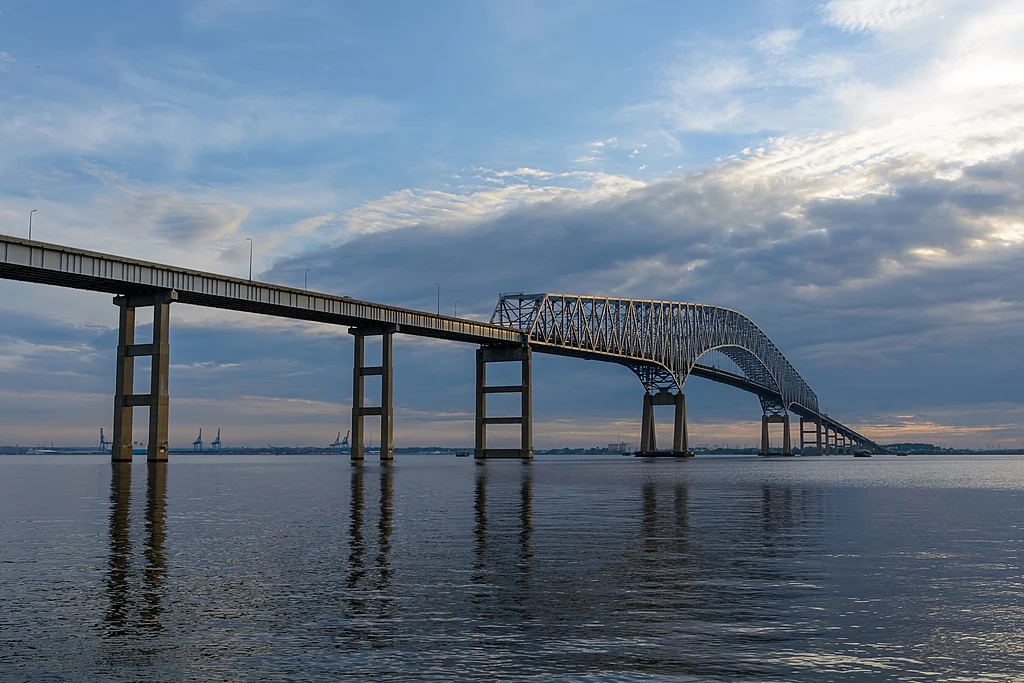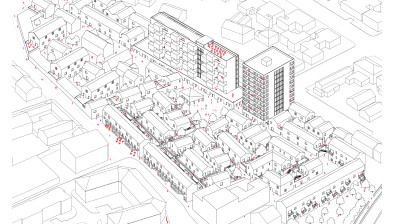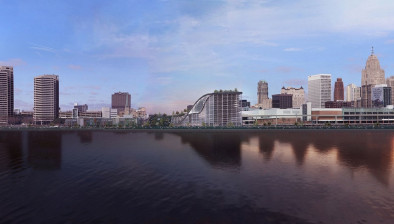Baltimore bridge collapse: Columns not designed to withstand lateral loads, says civil engineering expert

The Francis Scott Key Bridge before its collapse (Patorjk, CC BY-SA 4.0 via Wikimedia Commons)
The Francis Scott Key Bridge in the US city of Baltimore has collapsed into the Patapsco River after being hit by a container ship.
A major rescue operation is underway after reports that several people and vehicles fell into the water.
Videos show the bridge breaking up and quickly plunging into the water moments after impact.
Dr Masoud Hayatdavoodi, an expert in civil engineering and naval architecture at the University of Dundee’s School of Science and Engineering, has highlighted that while bridges may be able to withstand smaller lateral loads, the force of a container ship is “significantly larger”.
He said: “In areas where shipping is permitted, calculations are made to determine the maximum allowable elevation of ship from the water level. Unlike on the ground, this height varies in water, depending on factors such as water density and the cargo carried by the ship. In this case, it seems that the ship has collided with one of the columns of the bridge. Bridges are not designed to withstand lateral loads from ships on their columns.
“While they may be able to withstand lateral loads comparable to water currents and wind loads from a small boat, the force exerted by the impact of a container ship is significantly larger.
“There is no question that the bridge would collapse due to the impact on the columns. Where shipping is allowed under a bridge, there is typically a clear path for ships to pass safely, with a clearance margin. In this instance, there must have been reasons for the ship to deviate from its intended path and collide with the column.”
The local fire department said the ship hit a column of the bridge at around 01:30 ET (05:30 GMT) and there is no indication it was intentional.
The port of Baltimore near the bridge is the largest in the US for specialised cargo.
Dr Hayatdavoodi added: “Coastal bridges are typically designed to withstand loads from vehicles, trucks, trains, and other sources above the deck, depending on their intended use. Factors such as seismic activity, wind loads, and the loads on bridge foundations are also taken into account during the design process. In recent years and following major storms, including those in the US, some coastal bridges have collapsed due to the impact of large waves and currents from below. This is now also a factor for consideration in bridge design.”























